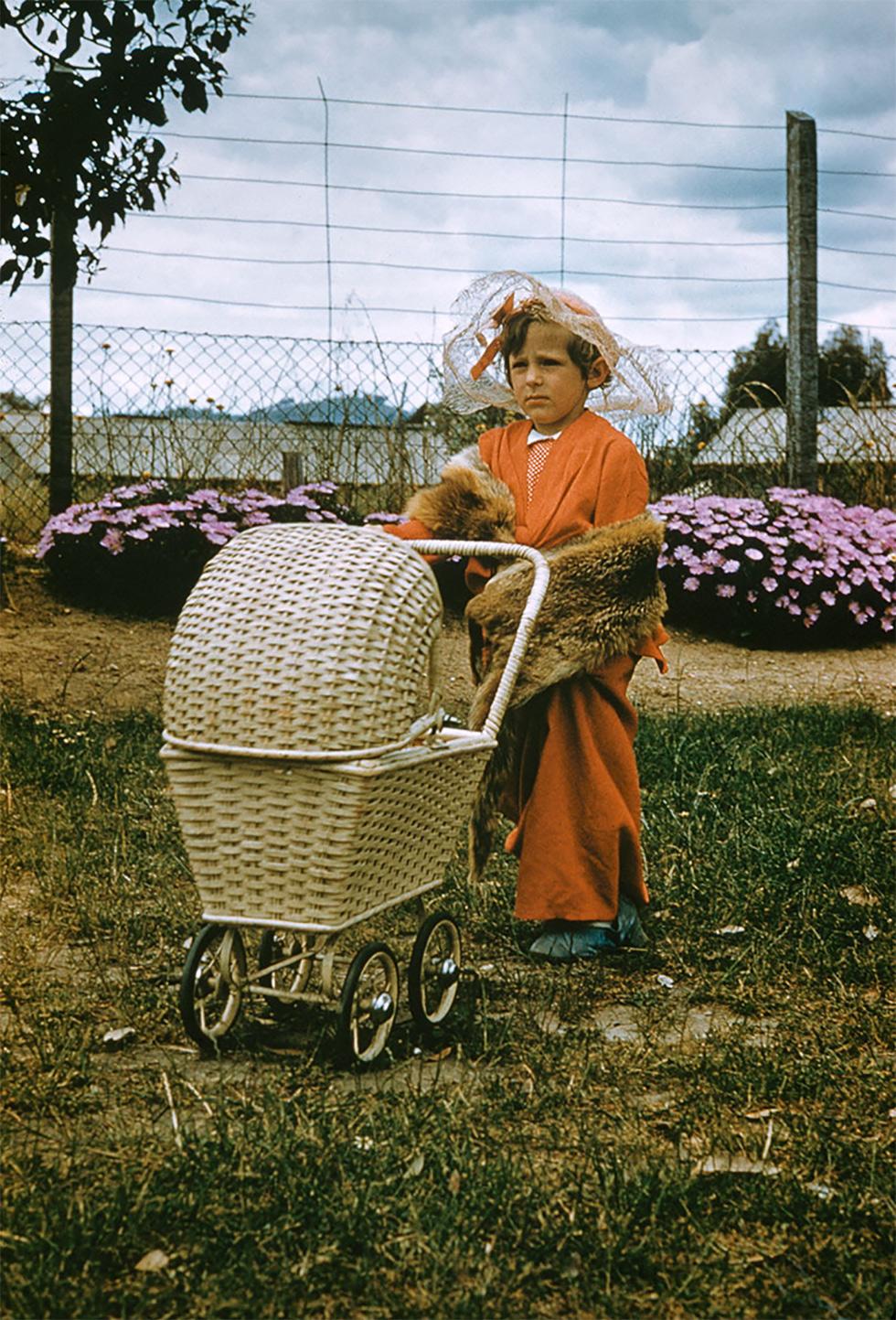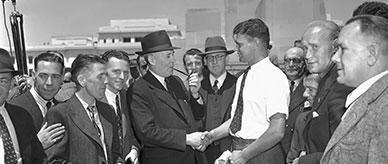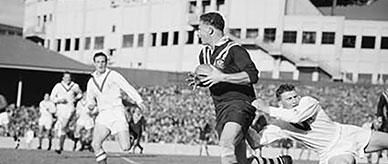


About this record
This is a colour photograph of a child playing dress-up and pushing a cane pram. Behind the child are pink daisy bushes and a tall wire fence.
Educational value
This photograph was taken at the Bonegilla Migrant Reception and Training Centre, which received more than 300,000 migrants between 1947 and 1971. Bonegilla was opened in 1947 near Albury–Wodonga, Victoria, to provide temporary accommodation for newly arrived migrants. In the years that followed, more 'camps' or 'hostels' were set up around Australia to meet the demand of increasing migrant numbers. Most migrants stayed in these for four to six weeks, although some stayed for months and even years. Today one Australian in 20 has links to Bonegilla.
- After World War II, most migrants travelled to Australia by ship. The journey was uncomfortable due to cramped conditions and seasickness, and typically took about six weeks. On arrival in Australia, most migrants were taken directly to hostels such as Bonegilla, which were often located in isolated, rural areas that did not reflect the ‘paradise’ portrayed in promotional campaigns.
- Hostels were established to house migrants while government officials processed their documentation and allocated jobs to them. Displaced persons who arrived through assisted passage schemes between 1947 and 1953 had to work in a job chosen for them by the government for two years. Many migrants found that their previous qualifications were not recognised or accepted in Australia, and they had to work in manual jobs in factories, on farms or on projects such as the Snowy Mountains Hydro-electric Scheme. Many women and children continued to live at hostels while their husbands and fathers worked, often long distances away.
- Conditions in hostels were often very basic, including housing in tents, old army barracks or Nissen huts without adequate heating or cooling and no flywire to keep insects out. In 1952 and 1961 migrants staged protests against delays in employment placement and the basic level of accommodation provided.
- Food in Australia at that time was based on the British style of cooking, which many migrants found bland and unappealing. At hostels, including Bonegilla, migrants took on jobs within the centre and worked to improve conditions for other migrants, such as providing more than one option for meals and serving food from a range of cultures. Later on, many migrants pooled money with other family members to open ethnic restaurants.
- The Australian Government provided English lessons in hostels, but this service was often inadequate. Until the mid-1960s, the government expected that migrants would leave their language and culture behind, quickly develop English skills and adopt Australian culture. For this reason, a major focus of hostel life was activities designed to assimilate migrants into Australian culture. Once migrants left hostels they received limited support to establish themselves in the community.
- This photograph was one of many created by the Department of Immigration to promote Australia to potential migrants, and to reassure the Australian public that migrants would have no trouble adapting to the local way of life.
Related themes
Need help with your research?
Learn how to interpret primary sources, use our collection and more.


